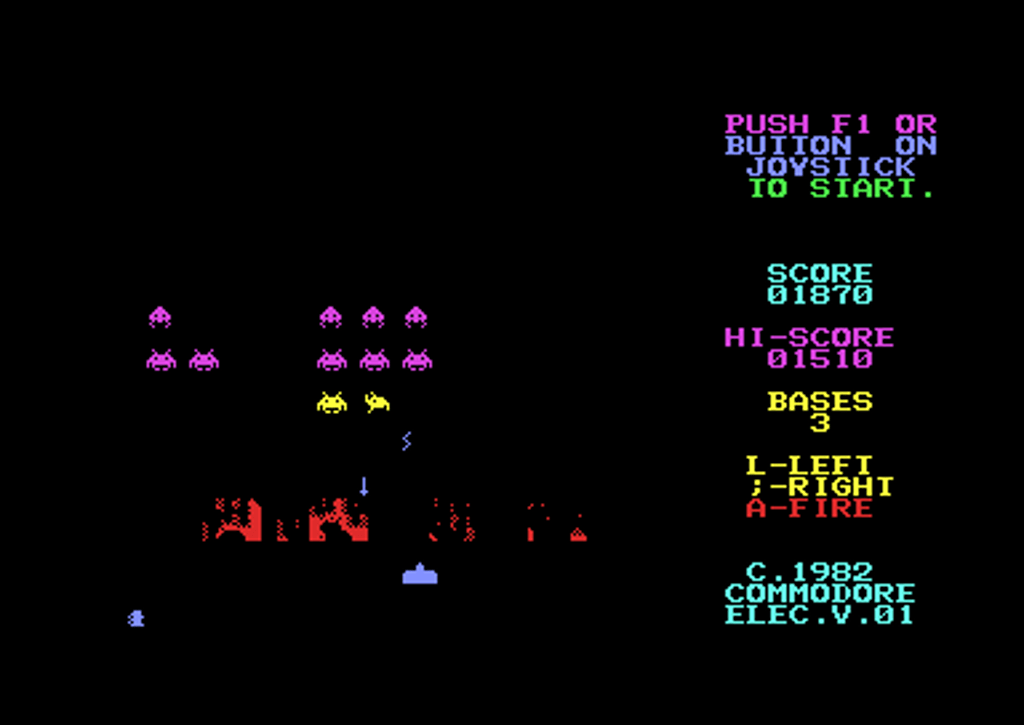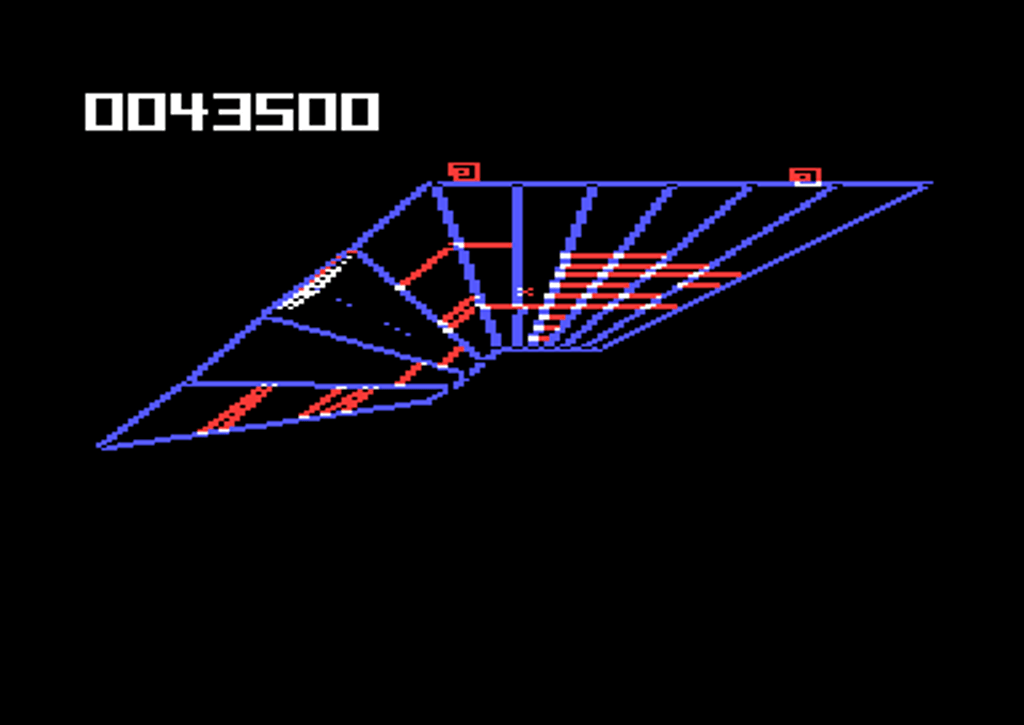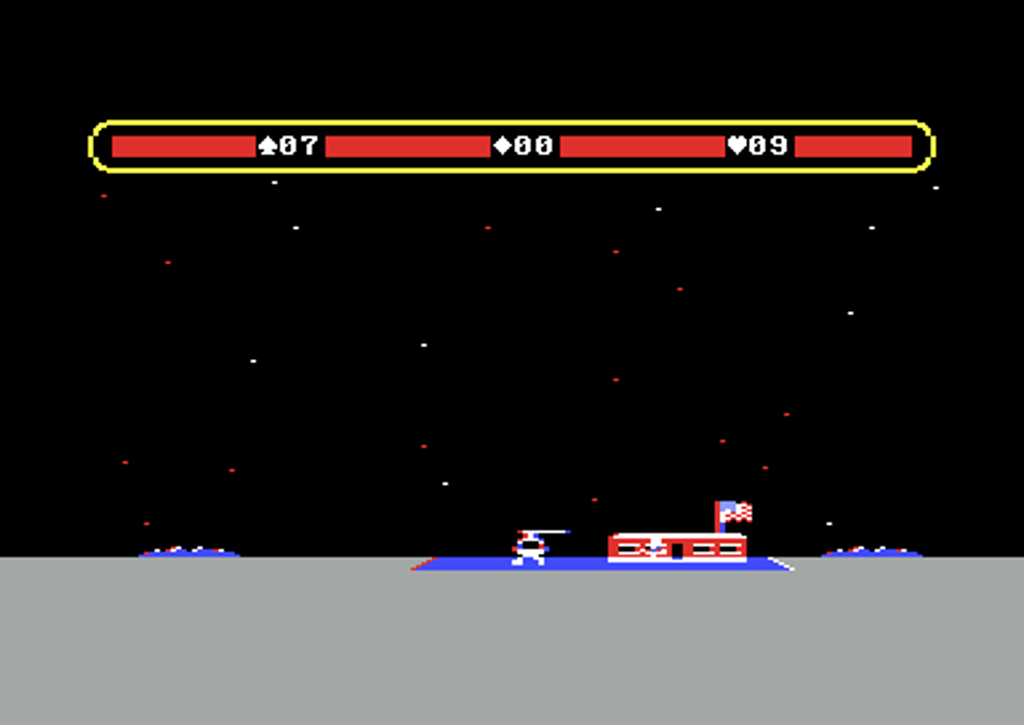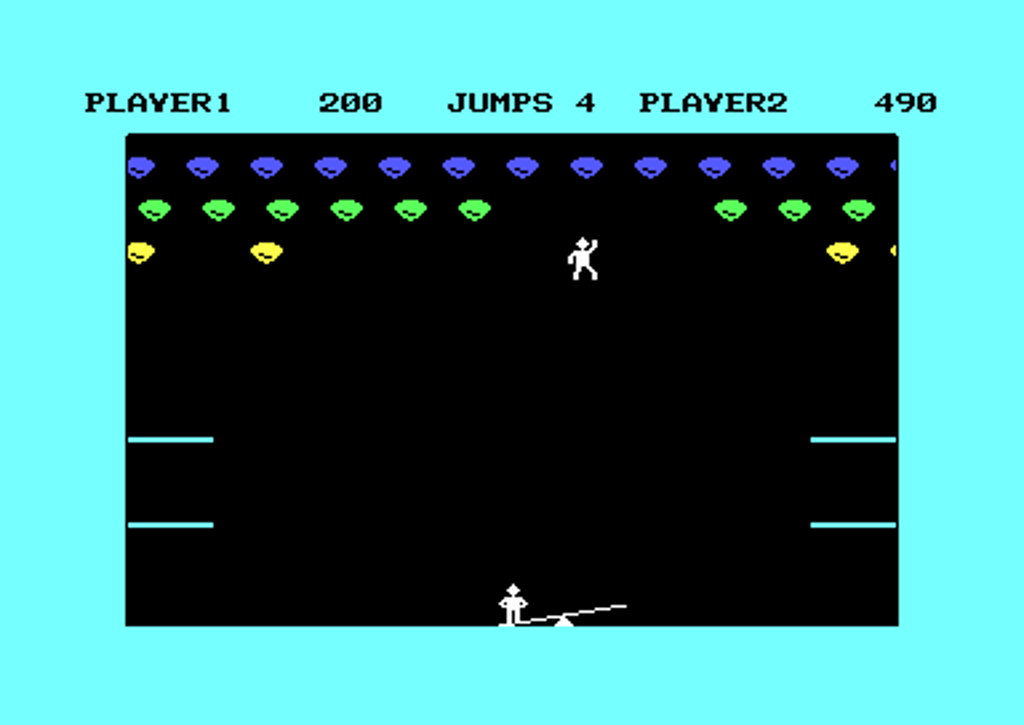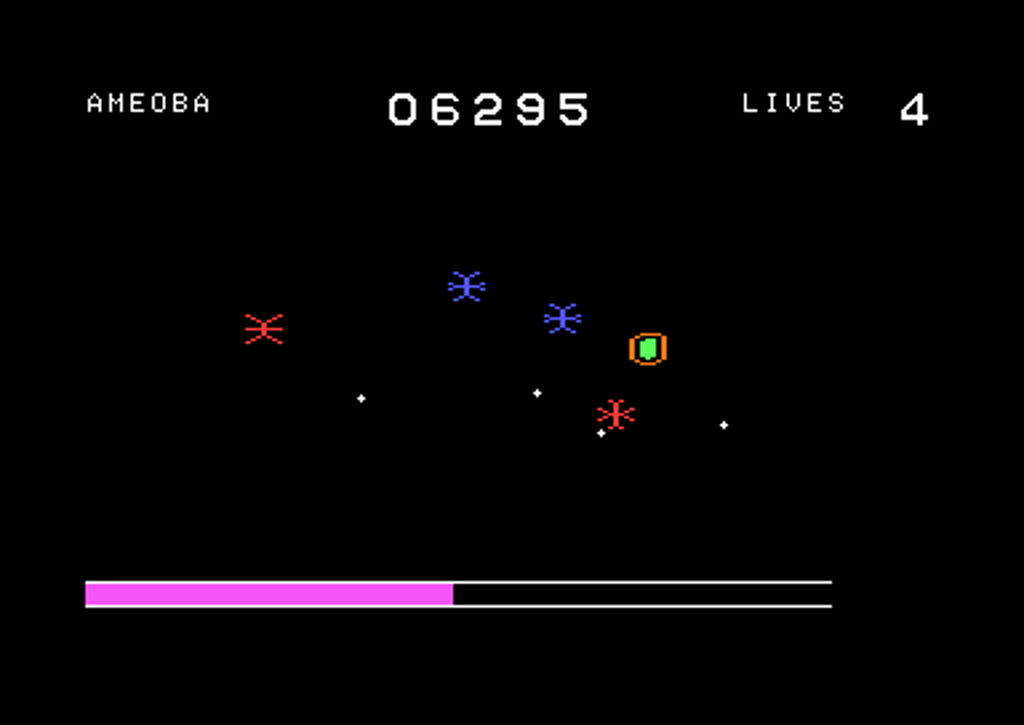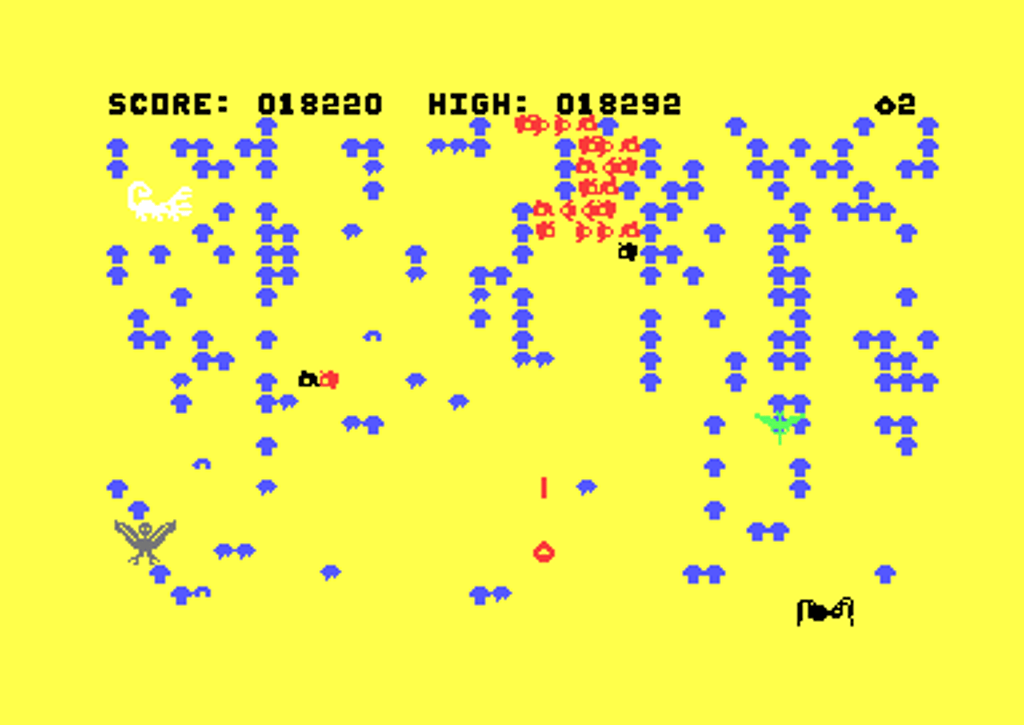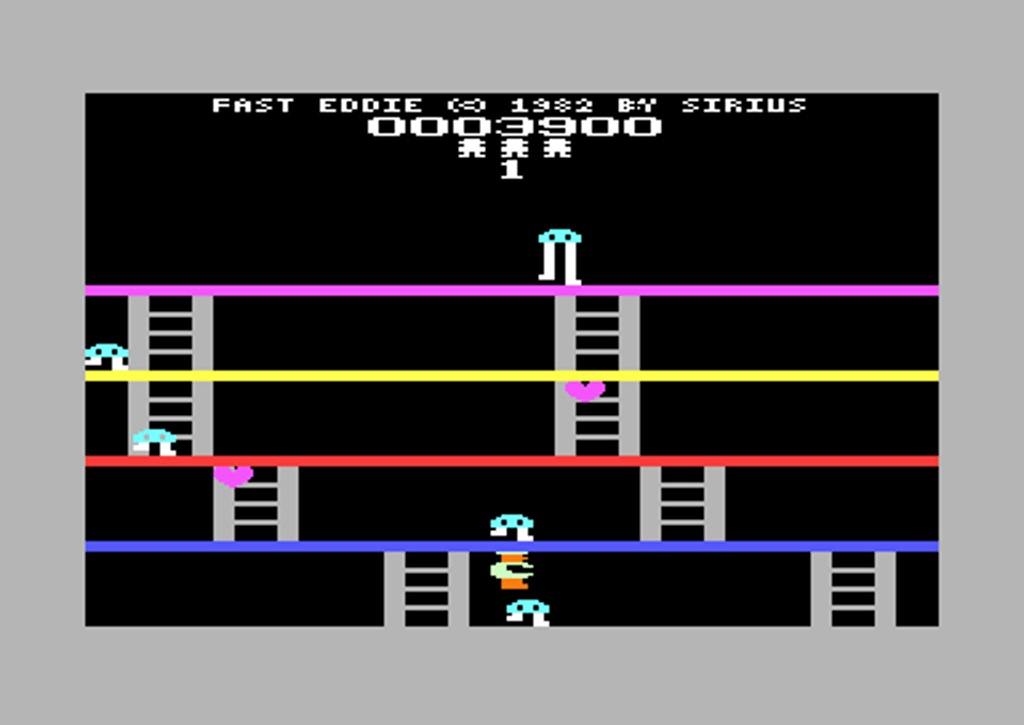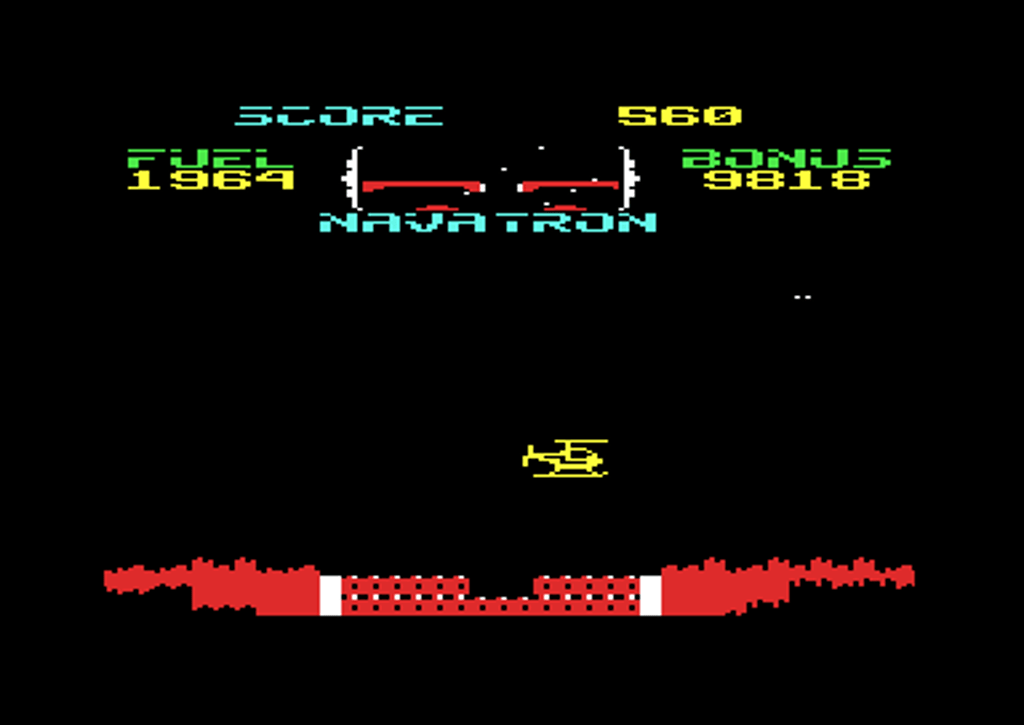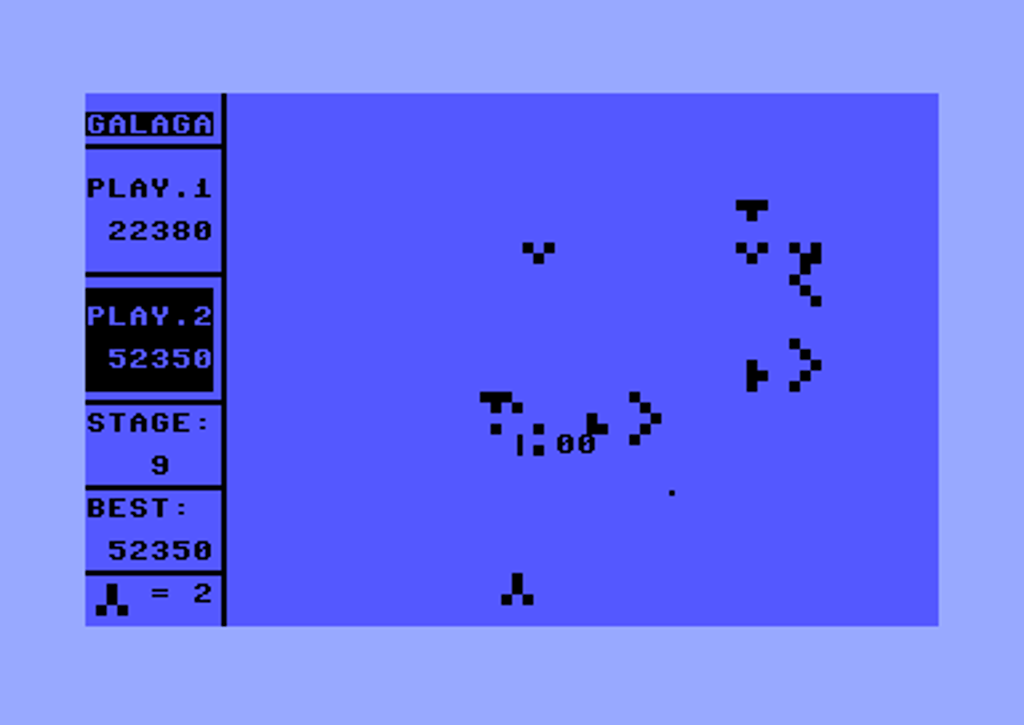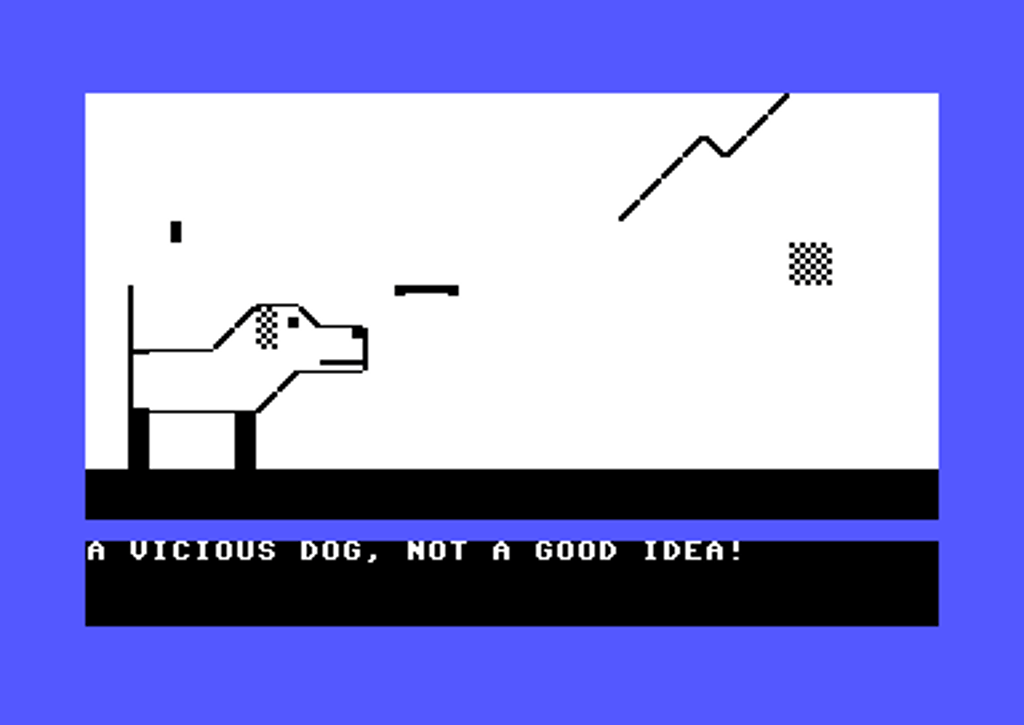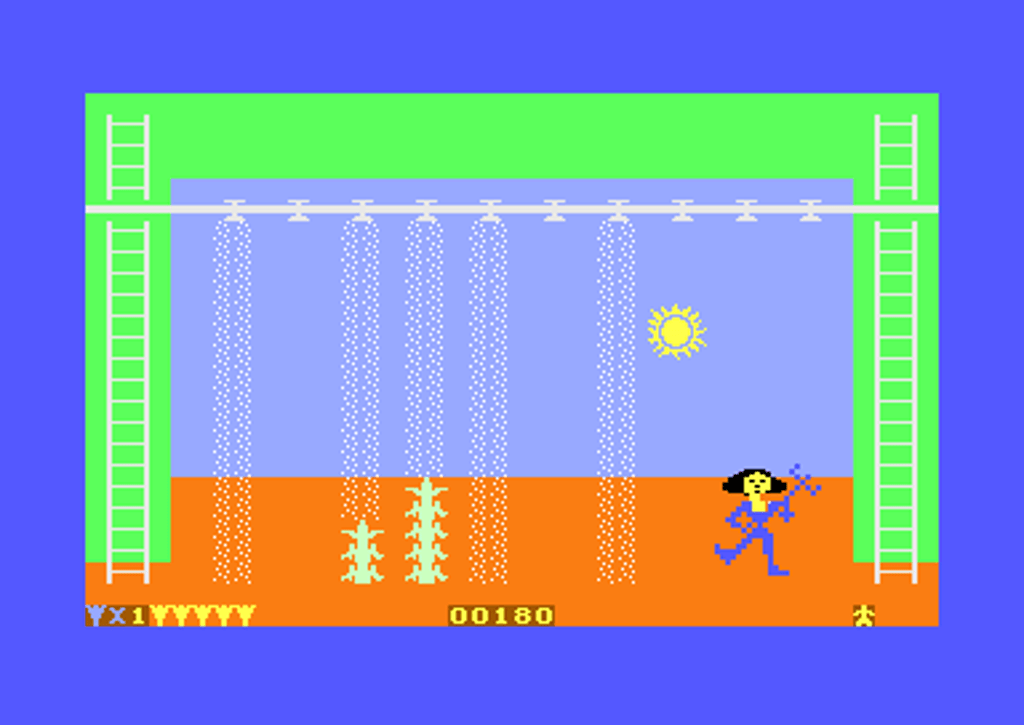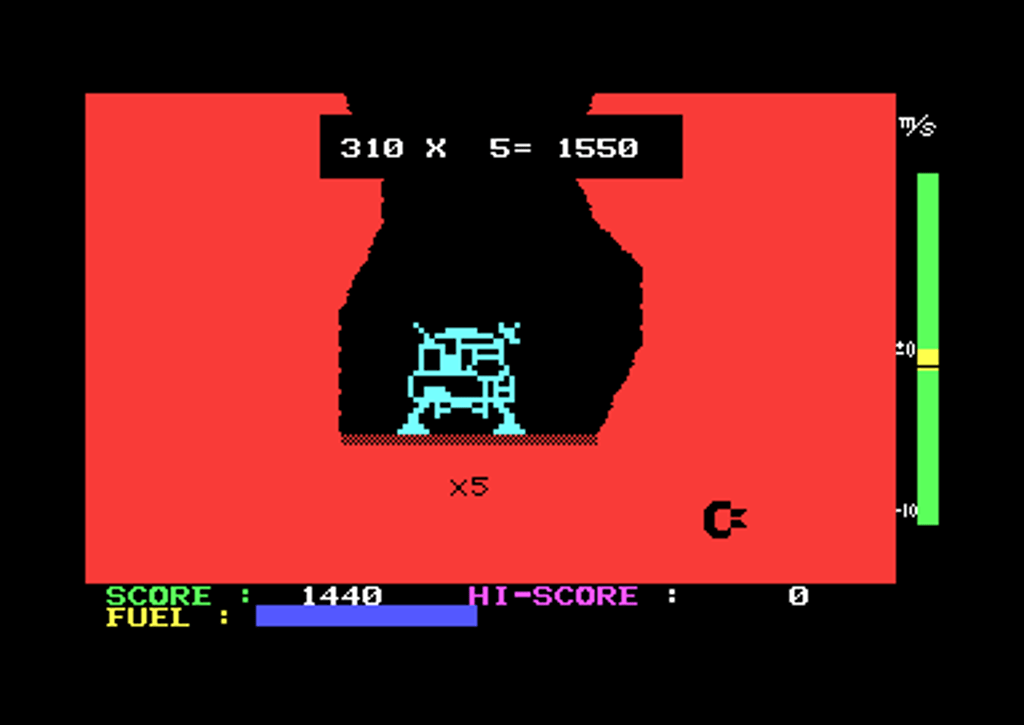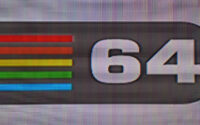Commodore 64 – Launch titles & Must-plays: Part I

Quick. Name three video game platforms that had an array of innovative and system-selling software at launch. The PS3? Xbox 360? The SEGA Mega Drive? I’m sure. But it was a slightly different story around the home computers back in the 80s. And when thinking about it (for way too long) – Was it all that different? Because all everybody wanted was fresh software for the exciting machine that they just had purchased.
Late summer 1982. Both the ZX Spectrum and the BBC Micro were already on the market. That seemingly infinite software explosion / revolution was just around the corner. ’82 was also when the entire home computer sphere started rolling towards that open door and onto that threshold. And in August, another competitor entered the game…
It’s a certain computer that with time revealed its extraordinary audiovisual capabilities… But what the did the entertainment part of the initial software library look like? Was there anything that made the machine more attractive than, for example, Sinclair’s? Or were there any games that could have come straight out of the arcades…?
We have to go all the way back to find out…
So are you keeping up with the Commodore? Because the Commodore is keeping up with you…!
The first and immediate obstacle was finding an actual list and release date for any of the games. Some launch titles are pretty much confirmed via Internet forums, but many only have a copyright notice on the title screen and such. (So that’s one “feature” omitted from this article already!) Therefore, we’re basically just observing 24 games that probably could be obtained / bought in 1982. (At least for Christmas.) Or copied.
Information on whether a game has a physical release or not (Most the games in this list have.) was of course done simply by Googling up images of tapes, disks, cartridges, and box art. “Download” refers to digital versions – Both official ones and cracks.
1. Avengers
Commodore
And why shouldn’t the most important video game ever get a Commodore 64-port at launch…?
That is of course Tomohiro Nishikado’s Space Invaders falling under that category – The most important video game ever. At least it’s the Holy Grail in the Shoot ‘Em-Up genre. And it was destined that such an astronomically popular game would spawn many clones with just as many names – The IntelliVision had “Space Armada”, the Atari 2600 got “Invaders”, the ZX Spectrum got “Invaders” too… And “Space Raiders”… And the Commodore 64 got “Avengers”. When the floodgates opened and people started making their own clones… Well, I’m sure there is an entire swamp of those to wade through in the public domain…
But the most important aspect of a Space Invaders conversion would naturally be how it looks, sounds, and plays. Thankfully, Avengers both looks and plays the part extremely well on the C64. There is no need to jealously glare at other contemporary platforms… But Avengers doesn’t quite sound the part. There is no “Space Invaders”-music (Those repeating four notes that play faster and faster as the number of Invaders decrease on screen.), your shots don’t make any kind of sound, and the rest of the effects are slightly different. But all the relevant mechanics, gameplay-wise, are present. You’ve got your sideways moving ship at the bottom of the screen. You shoot at the aliens – Five rows with eleven in each. (No liberties have been taken with how they look here either. These are the original Space Invaders – Just in slightly different colors.) And finally, between you and the Invaders are four bunkers that provide well-needed protection while they disintegrate under the rain of bullets.
And this is all that is needed for this one winning, perfect formula. (And Commodore didn’t add anything weird or “avant-gardistic” that isn’t in the original version.) Avengers can be played with either a Joystick, or three keys: “L” is for moving left, “;” is for moving right, and “A” is for shooting, shooting, and shooting. As for everything else, the game defies any attempts to describe its cultural value. Or the level of ingenuity behind every pixel and line of programming. But the best of all in this case is that the C64 basically got an arcade perfect version of the original. And if that doesn’t spell “system seller” already, I don’t know what does. — 1 Player · Joystick / Keyboard · Cassette / Cartridge (Physical + Download)
Commodore did actually release another “Space Invaders” version in 1983 called Avenger. (It’s also known as “Avenger II”.) Avengers is the original Commodore MAX Machine cartridge version that looks closer to the original Coin-Op than the “sequel” does. But the main difference is that the latter uses the entire screen width while the original MAX version has a side panel.
2. Axis Assassin
Electronic Arts
The first C64 game from Electronic Arts. (And that is in fact the very “same” Electronic Arts that you might know in an entirely different video game-related context these days…)
It’s practically impossible to fathom, but Electronic Arts was once synonymous with great and original games. On the C64 alone, they published one memorable piece of software after another (Several renowned and ground-breaking RPGs, for example.) up until 1991. (That’s 70+ games in almost a decade.) And it started with John Field’s Axis Assassin. The game is a Shoot ‘Em-Up with a bit of a dimensional twist, much like in Tempest. At first, you select difficulty level by choosing one of three different types of arachnids from the title screen. Then, you select a grid. Moving the Joystick left and right flips through them. There are ten to choose from, and these represent your starting level. Additionally, there are five difficulty levels, and this is determined by the color and pattern around the small “grid selection” window. When you press the Fire-button, a cursor draws the three dimensional grid as well as placing the obstacles / barriers in strategic positions. These barriers are in the shape of lines connecting two walls of the grid, and they are in a different colors. (Which makes them easier to see.) You control a vessel along these walls. The vessel’s Auto-firing laser-cannon effectively destroys the barriers and the various objects that kill you on impact.
To complete a level, you have to eliminate a number of obstacles and enemies. Then, you move to the next one… Until you meet that spider that you selected on the title screen. (It appears on the other side of the grid.) Your vessel can turn around vertically on the grid, but it can’t shoot horizontally. So when the enemies move towards you at the bottom of the screen, you’d better move upwards and shoot them from a vertical angle. To make the game even possible to play at even slightly higher difficulty levels, you can move freely between the lines of the grid. (Unless there’s a barrier there, of course.)
Axis Assassin sounds confusing when it’s described in this no doubt even more confusing manner, but it all makes sense as soon as you start playing. Some of the levels look pretty surreal and twisted – They can even be upside down, but the controls stay the same. (Fortunately.) The graphics may look crude and simple, but the gameplay is fast and semi-furious. And the equally simple sound effects break the always unwelcome silence. Sure, an 80s arcade game had to sound – Sometimes for the sake of sounding, but in Axis Assassin, the sound effects do have a function. — 1 Player · Joystick · Disk (Physical + Download)
Trivia: John Field made one more game for Electronic Arts on the C64 – The Last Gladiator in 1983.
Additional note: The cracked version by UGS did crash at several occasions on v3.4 of the VICE emulator. (x64sc)
3. Choplifter
Brøderbund
It happens to be a Shoot ‘Em Up among dozens and dozens, but it also happens to be one of the most iconic rescue missions in video game history…!
And such an objective is clear as day: Fly a chopper on a sideways push-scrolling level (With invisible walls at the far ends of the level.) while shooting down as many aggro jets and tanks as possible. (You have to stay in one piece as well! The ground rule is: One hit, and you’re dead.) Meanwhile, hostages in total panic-mode exit from barracks and scatter all over the ground. These hostages need to be rescued. This is done by landing in vicinity of them and waiting for them to leap aboard. Then, of course, everybody has to be flown back to the safety of your home base… If you survive one mission through either skill or with the help of sheer luck, another one awaits immediately. You get three lives and no additional fancy stuff. (Like Smart Bombs or more powerful weapons.)
Choplifter is just as classic as most of the games originating from the Golden Age of Coin-Ops, and on the C64, it’s simultaneously one of the earliest pieces of evidence that the machine could actually perform contemporary arcade action. (While attracting video game addicts to the platform, of course.) The software as such behaves very well and the controls are perfect. They need to mastered of course. With one stick and one button, you can fire in a couple of different directions as well as turning and tilting the chopper. By facing it towards you, it’s also possible to shoot straight down. (But you can shoot the hostages too if you get too trigger-happy.) C64 Choplifter is simply a good and functional port. It doesn’t have any bugs that disrupt or break the game. (In other words: If you screw up, it’s not the game’s fault.) And it works on the same premises as most other timeless and / or classic video games, i.e., it’s habit forming (To put it mildly.) and practically forces you to try again and again after every Game Over. And one thing is for certain: Without Dan Gorlin’s original (For the Apple II.), we wouldn’t have had all the amazingly varied Shoot ‘Em-Ups (Or the contemporary classic Fort Apocalypse, for that matter.) that practically started rolling off the assembly line during the years that followed. If you have played more 80s Shmups than you can count, you most certainly have played one or two Choplifter-clone in your days as well. — 1 Player · Joystick · Cassette (Physical + Download)
The C64-version of Choplifter was programmed by Dane Bigham. An unpublished German translation (For those who needed it for some reason.) was made by “G-Trans” as late as in 1998.
4. Clowns
Commodore
What about a C64-port of an arcade game that’s even better than the Coin-Op…?
The evolution of the Breakout-genre wasn’t ever going to take giant leaps into something that one day would be barely recognizable. No – Breakout is simple and has to be kept simple. Like Tetris or Space Invaders. (Or it isn’t Breakout anymore, is it?) Edward Valeau and Howell Ivy figured that they could switch the bat, the ball, and the bricks for one seesaw, two clowns, and balloons. And so Circus was born and subsequently launched through Exidy, in 1977. Bally Midway released their own variant called Clowns the year later.
Circus and Clowns look and play in a very similar fashion, and Commodore’s port is logically based on the latter. A new round of the game starts with one of the clearly suicidal clowns jumping down from one of the four random ledges at the short sides of the screen. The idea is to catch the clown with the vacant half of the seesaw. When he lands, the force catapults the other clown into the air, and the goal is to jump higher and higher and subsequently catch all the balloons that move horizontally in three lines at the top of the screen / above the ledges. Miss the seesaw or land on the occupied half of it, and the clown collapses dead on the ground. The lives are called “Jumps” and you get five jumps when you start a new game. Points are given for each caught balloon and Bonus-points are awarded for clearing a line. Colliding with the balloons or ledges also affect the trajectory of the non-stop air-dancing / flailing clown. (But bouncing against the ledges doesn’t kill them.) The levels naturally get harder and harder every time you complete one. And if all this wasn’t enough, the game speeds up the longer you manage to keep the clowns jumping…
The C64-version is obviously arcade perfect. Nothing is missing, really. Not even the precious coins in your wallet as you play “just one more game”. The graphics between the two versions are basically identical, save for the nuances in the systems’ colors. The only notable thing about the sound is the short, very simple and crudely bastardized part of the “Funeral March” playing when you lose one jump. Apart from that, there are just two sound effects. Both are there simply because a silent video game in the action category basically always feels like an incomplete Demo version. — 1 – 2 Players (Alternating) · Joystick / Paddle · Cassette (Physical + Download)
Clowns exist in two versions – One for Joysticks and one for Paddles. No other variants of the game were released on the C64. (At least not officially during its commercial era.)
5. Evolution
Sydney Development
Straight from the Apple II – Don Mattrick’s and Jeff Sember’s (Founders of Distinctive Software, Inc.) innovative mix of various arcade games.
How far can you evolve from an amoeba? To a tadpole? A rodent? Or even a beaver? Gorilla? Or maybe all the way to a human…? Each of these living beings are represented with an arcade sequence in Evolution. That’s six single-screen mini-games in six different categories. The amoeba gets a relatively action-packed Collect ‘Em-Up where the idea is to munch the randomly placed DNA while avoiding other hostile organisms. The only protection the amoeba has is a brief moment’s invulnerability that’s activated with the Fire-button. It protects the amoeba, but it also drains some energy every time it’s used. Make it to the next level, and you become a tadpole. The tadpole has to avoid the horizontally moving and leaping fish while trying to eat flies. The tadpole then turns into a rodent that gets some classic Dig Dug action. The fight for survival includes digging tunnels while collecting cheese and avoiding snakes. Endure this ordeal, and the beaver is the next evolutionary step in life. Mr. Beaver has to swim around alligators in a section of a river in order to fetch material for some crucial dam-building. Death is naturally instant upon contact with the gators. Next is the gorilla, and he has to defend his storage of delicious oranges by flinging coconuts at a horde of invading primates. No oranges means death by starvation. Those important Vitamin Cs are enough to take that last leap to evolve to a human. And as one quite far down in the food chain, you have defend Earth by fighting off various mutated bastards with a laser gun. (No wonder evolution takes time when it’s such a constant struggle.)
The difficulty modes in Evolution are: Beginner, Intermediate, and Expert. (You can also practice any of the stages.) Intermediate simply lets you begin the game at Level 7 and Expert skips to Level 13. The game was ported by Amory Wong who did all the code, graphics, and music / sound effects. (Well… Music in this case is beeps at different pitches. And it’s music as much as a 90s cell phone ring-tone is a symphony.) And for some reason, the game plays the French national anthem when it’s Game Over. Evolution even has an attract mode that not only presents the stars of the journey (They enter the screen one by one and even do a little two-frame “song” for you.), but it also shows the mini-games briefly. — 1 Player · Joystick · Disk (Physical + Download)
Evolution is another game that exist in a couple of different iterations. Your best bet would be the “unaltered multi-parted” version. Or an original disk image. (Avoid the single-load version as it crashes every now and then.)
Trivia: One of the creators behind the original game is of course the same Don Mattrick who said: “Fortunately, we have a product for people who aren’t able to get some form of connectivity. It’s called Xbox 360.“ when the Xbox One was introduced.
6. Exterminator
Bubble Bus
And someone was destined to release the very first C64-version of Centipede.
Everybody knows that the best way to get rid of unwanted insects from plants is to exterminate everything – Both the vermin AND the plants. In this unmistakably Centipede-esque scenario, the plants are randomly placed cacti on screen while the “insects” are the crawling worms that form lines and make their way down the cactus jungle. Kill a worm in the middle of a line, and the line splits up in two. (This can logically be repeated until there’s only sole worm zigzagging between the cacti.) But this jungle is also inhabited by eagles, mosquitos, scorpions, and tarantulas. Your non-stop job is to move the spray can around the lower fourth or so of the screen and spray every living thing away. A cactus takes a couple of hits and awards the player 34 points for some reason, while a dead worm is worth 50 points. An eagle gets you a random even hundred points, e.g., 400, but the big points come from killing the giant mosquitos and scorpions – 1000 and 2000 points respectively. The tarantula can’t be killed as it comes walking at the very bottom of the screen and you can’t spray the insecticide sideways. You get three spray cans at the beginning of a new game, and an extra can every 10.000 points. As you do some serious extermination, the screen background changes color to indicate progress. (It’s yellow to begin with.) If you have ever played any official or non-official variant of Centipede, you immediately know how to play Exterminator. It plays and controls just like the real thing. The game includes an alternating multi-player option for up to nine (!) players. (A bit redundant, but then again: How else are you going to have serious Exterminator-tournaments every now and then…?)
Exterminator was created by Ken Grant. (The title screen says: “© Nufekop [and] Bubble Bus”.) The graphics are as simple as they need to be – Single-colored sprites in two-frame animations plus a custom PETSCII-character for the cactus and the worm(s). What more do you need in the world of “Centipede”? (But at least Grant bothered to make a custom in-game font. And that always makes a game look a bit more professional, if you will.) The only noteworthy sound effect is that call of the eagle. (Which kind of reminds of an owl.) Exterminator also has one built-in screen for instructions that lists the in-game enemies and the keyboard controls. So if you were dying to play Centipede on your brand new C64 in 1982, you had an option! — 1 – 9 Players (Alternating) · Joystick / Keyboard · Cassette (Physical + Download)
The official version of Centipede wasn’t released on the C64 until Atarisoft made their Coin-Op port in 1983.
Trivia: In the future, Bubble Bus became mostly known for games like Aqua Racer, The Fifth Quadrant, Starquake, and SkateRock.
7. Fast Eddie
Sirius Software
Fast Eddie lives up to his name in this “prequel” to games like Jumpman and Bounty Bob Strikes Back.
If there ever was a prototype for a “platforms and ladders”-game that showcased how responsive such a game would be on the C64, it could very well have been Fast Eddie. It retains nearly all of that original Atari 2600-look as well as the addiction factor of one of the simplest arcade action games possible.
Fast Eddie is a single-screen game where each screen has four floors and a ground. The floors are connected to each other with ladders. Fast Eddie’s life is all about collecting items (Hearts, etc.) that randomly pop up on any of the floors. It would be too easy and one extremely early version of the game if Eddie could just climb up and down the ladders and jump to get the items. But there is that universal law of video games: There has to be some types of enemies or other dangers. Or dangerous enemies. These ones look a bit like Space Invaders on legs and are called Sneakers. The Sneakers kill through a sole pixel’s touch, and you guessed right if you guessed that they have to be avoided. Fortunately, Eddie can jump over them. And he is one fast jumper. Collect enough items (Ten.), and the Sneaker on the top floor reveals a key that levitates above its head. Like most Sneakers, it constantly moves left and right on the platform. (Some of them stand still.) The difference is that this Sneaker has much longer legs than the other ones. But its legs shrink slightly every time you collect an item. (Are things getting a bit crazy already…?!) So when the key materializes above the Sneaker (And when its legs are as short as the others’.), the idea is to jump over it in the exact right moment and catch the key. And in that instant, the game freezes, Bonus-points are awarded accordingly, and Eddie moves to the next, slightly harder, level. Usually, you also get an extra Eddie. Rinse and repeat. Ish.
The design of the levels doesn’t vary that much. (The position of the ladders shift slightly (Horizontally. And there are always two ladders between two floors.) And the platforms and backgrounds don’t change color like in the original version. It’s just that everything moves a tiny bit faster and that tests your reflexes and Joystick-skills further. — 1 Player · Joystick · Cassette (Download) / Disk (Physical)
Fast Eddie originally appeared on the aforementioned Atari 2600, 400, and 800 as well as the VIC-20. (And several months before Manic Miner.) Mark Turmell (Creator of games like Beer Run and Turmoil.) programmed the original version while the C64-version was programmed by Kathy Bradley.
8. Fort Apocalypse
Synapse Software
Multi-Directional Scrolling Shmups – The Earliest Days On The New Machine…!
Konami’s ground-breaking games Scramble and Super Cobra were released in February and March 1981 respectively. (So they are more like twin games than anything else.) That’s two hard-core Shmups that were destined to shape an entire new genre with thousands of “sequels”. And not before long, the Atari 8-bit got this “Super Cobra”-inspired I.P. that also added another dimension (Vertical push-scrolling.) to the constant shooting and dodging of surfaces that are much harder than the chopper that the player is in control of. Steve Hales developed the original Fort Apocalypse, and the C64-version was done by Joe “The Warriors Of Zypar” Vierra.
Instead of merely flying above ground like in Choplifter, you also have to descend into the underground while navigating through more or less hellish environmental traps. And not “only” do you have to rescue people, but the chopper also needs to be refueled at fuel pads every now and then. (To your advantage, you can, just like in Choplifter, shoot straight down while hovering, and not just in the direction that you’re flying in.) “2000” units of fuel equals a full tank, and that number (Along with the Bonus-points.) decreases at an alarming rate, all the time. The helicopter is one hell of a gas-guzzler, and the whole mission as such is what even a skilled Choplifter-player should dream nightmares about. Unsurprisingly, the entire operation is hard as hell – Basically from the moment you have fueled your chopper (It’s flying on fumes when you start the game.) and attempt to eliminate the first ground targets. One slip of the button or the stick is usually fatal. Because when you have managed to get past the caves, there is also that titular fort. With a rather fitting name. (It’s called the “Vaults Of Draconis” in the game, except “Fort Certain Death” would’ve been suitable too.) But Fort Apocalypse does have an option screen where you can turn your life into a lesser inferno – “Gravity” can be adjusted between weak, normal, and hard. “Pilot Skill” can be at Novice, Pro, or Expert levels. And you can start with either three, five, or seven lives…
The game itself has iconic visuals for such a super-early C64-title. (As in: The combination of backgrounds, sprites, art-style, and soft screen-scrolling.) Fort Apocalypse certainly marked the beginning of something new, and it’s a leap in Shmup-evolution. With all the fresh ideas that fit in the concept, it inspired quite a few games that would appear on the market in the very near future. — 1 Player · Joystick · Cassette (Physical + Download)
Fort Apocalypse was “followed” by Fort Apocalypse II in 2010. However, the sequel is a Public Domain release with re-designed levels, i.e., it basically uses the same resources as Vierra’s original. (But with additional programming by David Riehl.)
9. Galaga
Henrik Wening
No– No game-centered platform is even a fraction complete without Galaga… And while everybody was waiting for the official version, there was an alternative…!
But alas, it never surfaced… What the devil happened to the official version anyway? Nobody even thought about hiring Atarisoft to port it…? (Which is a bit peculiar since they ended up doing Dig Dug, Pac-Man, Pole Position, and Galaxian.) So… Here is Henrik Wening’s port of his own Commodore PET conversion.
What Galaga is is impossible to describe… Not the game itself, but the cultural importance and impact that it has. Likewise, it’s impossible to describe what an absolute classic it is. But it’s like Space Invaders and Pac-Man in that regard… I have no idea how many Galaga fans and fanatics were too excited about playing a version that looked like someone had typed in a Basic program from some magazine without even bothering to change the color of the PETSCII-graphics… But I’m sure those people never actually played “C64 Galaga”… Because this version doesn’t feel like it has been anywhere near “Basic”. (Except that title- and option screen.) This is one fast and responsive Shoot ‘Em-Up despite it utterly crude looks. (Forget about Zakos, Goeis and Boss Galagas here – There are three different enemies built from three, four, or five ginormous black squares at 4×4 pixels each.) And this version has Auto-Fire. (Which always is a beyond religious blessing in this context.) Just like in the arcade original, you get more points for shooting aliens in flight than if they do the sideways Space Invaders on screen dance. (The biggest alien is worth 400 “in Flight” and 150 “on Position”.) At 20.000 points, you get an extra life, and then another one every 70.000 points. On the left side of the screen, you have a score counter for both players, a stage counter, today’s best Hi-score, and a life counter… It’s some fun shooting, for sure. (And easier than the original.) And the game has a satisfactory “early 80s Coin-Op”-soundscape even if it doesn’t sound like Galaga…
But the question remains: Was a C64 user with Galaga in the Datasette as happy as he or she had been at the arcades while playing the Coin-Op? On one hand, you can’t lose more money than you planned to part with, but on the other hand, you’re playing a minimalistic yet very playable version of the Coin-Op at home, for free. — 1 – 2 Players (Alternating) · Joystick / Keyboard · Cassette (Download)
A color version of C64 Galaga was produced in 1983, but it remained unpublished. It was followed by Galaxy (1983) and Fire-Galaxy. (1987) Henrik Wening made a bunch of other games for Kingsoft, like Space-Pilot, Space-Pilot II, Zaga, Zaga II – The Conflict, and Zyron.
10. Grave Robbers
Victory Software
What is it about interactive grave robbing time in PETSCII-land? Are we merely waiting for better times?
Grave Robbers is about finding and stealing a diamond concealed somewhere in a dark cemetery. Grave Robbers is also the first and last of Bruce T. Robinson’s text adventures that include both graphics, animation, and ambient sound effects… Although those terms have to be used quite lightly in this case. We’re talking “C64 Basic”-basic. The environments are all illustrated with the computer’s PETSCII-characters (Even the vicious dog!), the animation is a single bolt of lightning that momentarily whites out the screen, and the sound effect is a cracking noise that’s supposed to be a clap of thunder…
Although the verb-noun based input is very basic (To, for example, input “FEED DOG”, you only need to type “FE DO”.) and the game can be beaten in 27 steps, it does have some charming puzzles and a special presence. This “homebrew” presence kind of came and went from the commercial games once text adventure developers started putting Hi-res images in their games and when they could produce them like Infocom, i.e., putting multi-load programs on an entire disk (usually) including parsers that understand hundreds and even thousands of words. (Grave Robbers is kind enough to list all the verbs that the game understands before it starts. But no nouns!) So to whom could one recommend this game to? Well, anybody who wishes to experience a very early graphic text adventure on the C64… That’s pretty self explanatory. An arcade game player won’t find any type of joy or fascination here. Back in 1982, I’m sure it inspired at least some enthusiasts to create their own adventures from scratch…
Robinson’s Victory Software stuck with the C64 for a couple of years and usually published variants (Like Kongo Kong, Chomper Man, Mushroom Alley, and Annihilator.) of well known and better games (In this comparison, those would correlate to Donkey Kong, Pac-Man, Centipede, and Defender.), but they also developed and released quite a few adventure-based games and arcade games – The most notable one being the Metamorphosis series. Bruce Robinson programmed over half a dozen text adventures during 1982-83. Some of them were co-programmed with Dr. Alan Stankiewicz. While neither Hospital Adventure, Bomb Threat, nor African Escape could “threaten” Infocom’s position as the Crème de la Crème in interactive fiction, Robinson’s games still improved slightly over time and incorporated some interesting themes and ideas. — 1 Player · Keyboard · Cassette (Physical + Download)
Grave Robbers was subsequently also published by Rabbit Software in 1983. It changed a couple of things, like the title screen. But also some puzzles – In the original, you already have the sandwich in your inventory when the game starts. In the re-release, you have to retrieve it from an additional location. Things like that.
Additional note: If you press RUN/STOP during the game, the program is interrupted like an ordinary “unprotected” program in C64 Basic. And with the LIST-command, you can view the entire game code. The game isn’t that optimized either. You can’t use Backspace to delete what you have typed in. And if you press the Space-bar before the verb, the program won’t interpret your command, only replying with a “Huh?”.
11. Greenhouse
Commodore
Greenhouse maintenance – A literal full-time job.
Yet another sub-genre that just seems to have faded into obscurity… (Although this is more in line with early arcade games more than anything new per se.) Greenhouse stars what’s probably one of the earliest female protagonists in a video game. Armed with a rake, this raven-haired 8-bit lady in blue runs and climbs around a greenhouse taking care of business…!
I have no idea what the hell somebody put in the soil, but this is one greenhouse where the process of photosynthesis is on crack 24/7… There’s the sun rising, traveling, and setting on the sky in the background. And there’s the manual watering system. And soon, there is weed that grows faster than anyone could be able to smoke it… (All right, so it’s not that kind of weed…) And occasionally, on the weed stalk, a yellow flower grows. So the soil has to be watered, and the weed has to be dug out before it grows too tall. If you just hang around and relax, the weed turns the greenhouse into a small jungle. (Probably drawing the attention from the police at the same time.) After you have turned on one of the ten showers above the ground, you can’t rake the weed or pick the flowers unless you turn off the water again. Remove the weed, climb the ladder, turn on the water, wait for growth, turn off the water, wield the rake… And so on. It’s a busy day which doesn’t include breaks. You get points for each collected flower. You lose one turn every time one of the weed stalks reaches the watering system. (And if there’s a flower on that particular stalk, you lose that too – To decomposition.)
Greenhouse is typically “early arcade game”-hectic from the first minutes, and this is even before the giant bloody bee invades the greenhouse. (The caretaker lady happens to be extremely allergic to bees, so it has to be avoided at all costs… Except it’s simply extremely venomous due to its size.) This is simultaneously another early Commodore-produced game for their brand new machine, and they have that “special” (Charming?) look. At the same time, Greenhouse somehow indicates that Commodore probably believed that they produced software that only the C64 could handle better than. There are several on-screen sprites (Even one or two multi-colored ones.), custom-made character blocks (Instead of PETSCII-graphics.), a background in more than one color, and fluid gameplay. But what about the power of that SID-chip? Naw! As long as it can make some hissing noises to accompany the action, it’s good enough for Greenhouse and its fans…! And the game “happens” to play well. And that’s usually what counts. — 1 Player · Joystick · Cassette (Physical + Download)
12. Jupiter Lander
Commodore
The original Lunar dates back to 1969, and the first graphical iteration (Under the name “Lunar Lander”.) was conceived in 1973…
… So Jupiter Lander would be like a modern, evergreen variant… It’s not like there was a shortage of “Lander”-variants on any platform in 1982. If you had access to machines like Sol-20, Wang 2000, Altair 8800, Apple I, and/or various calculators, you could play the game in some shape or form. And when you “discover” that the C64 alone got around a hundred variants of the game throughout the decades, you might start wondering what it is about a game idea that just lives on and on like the “?LOAD ERROR”… Commodore moved their more or less catastrophic nitroglycerin-packed space-vessel landing attempts to Jupiter instead of the moon. Because the scenario is simple enough – You need to land the titular lander on one of the three platforms on the screen. (Which depicts the surface of Jupiter in this case.) And you have to land again and again. Depending on where you manage to touch ground, you are granted Bonus-points that transform into fuel for the vessel. The platforms are marked with “x2”, “x5”, and “x10” respectively. Unsurprisingly, landing on the “x10”-platform is the trickiest challenge of them all.
On the right side of the screen is a Speedometer that displays “m/s”. To count a landing as successful, you have to power the lander’s thrusters enough so that the Speedometer registers above zero m/s in the very moment you land. (Or it counts as a crash.) This is trickier than it sounds as the gravitational force makes the ship go at negative speeds upon free fall. Land, and the lander is refueled as your Bonus-score is displayed on screen before you have to do the landing process all over again. Start worrying when you don’t have enough fuel to even make it to the “x2”-pad. (At the arcades, you could always refuel by feeding the machine coins.) Jupiter Lander is controlled with either the Joystick or the keyboard. You have one key for each thruster – Left, right, and up. (You can always get down, right?) To make the game slightly easier to overview, the screen zooms in as you approach one of the landing pads. You can’t touch one pixel of the surroundings without exploding. (And as mentioned, the same thing happens when you land without active thrusters.) It’s no wonder why the original game was categorized as a “space flight simulator”… And those are the games that everybody remembers. Back then, just like today. — 1 Player · Joystick / Keyboard · Cassette (Physical + Download)
Jupiter Lander was also released on cartridge for the Commodore MAX Machine in Japan. The difference between the two versions is virtually indiscernible.

